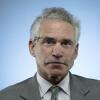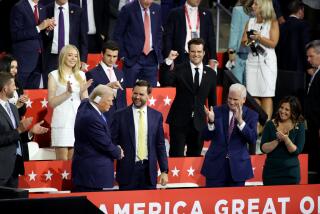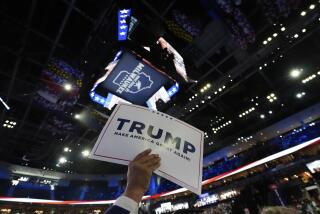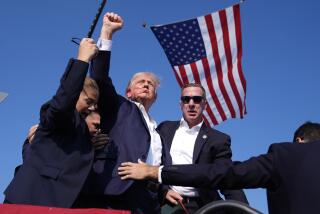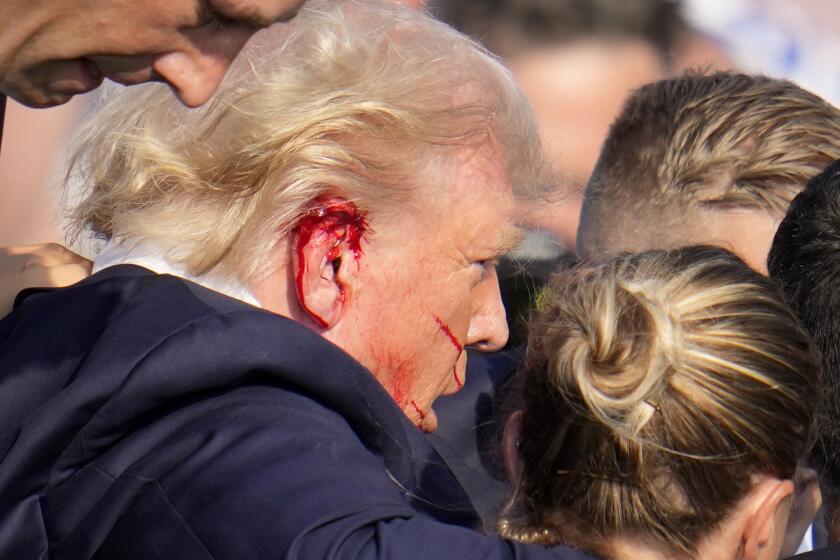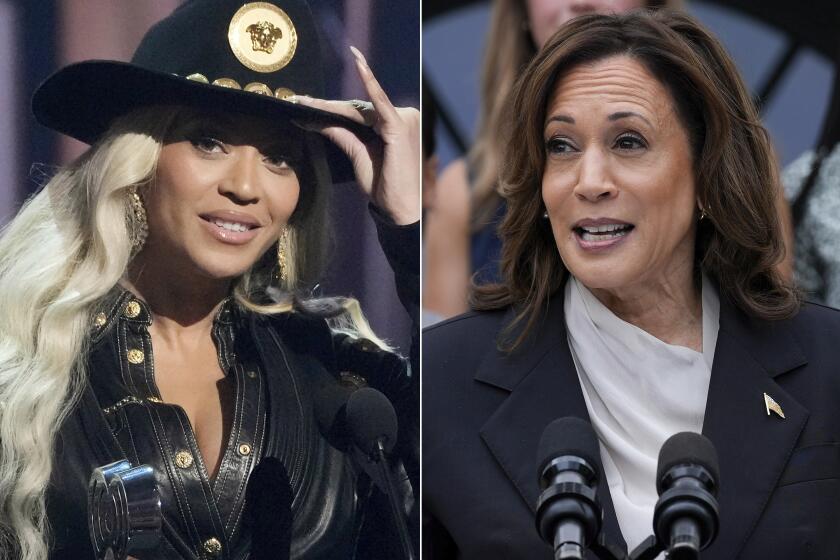Analysis: Again breaking ground, Trump takes the permanent campaign to new heights

A president perpetually in campaign mode is nothing new. (Aug. 24, 2017) (Sign up for our free video newsletter here http://bit.ly/2n6VKPR)
The permanent campaign has been a fixture of the modern presidency for more than a generation — ever since Jimmy Carter, eyeing reelection, shucked his suit coat in favor of a more casual cardigan.
But President Trump, in yet another break with convention, has scaled new heights when it comes to politicizing and, especially, personalizing the workings of the White House.
Unabashedly proclaiming his desire for a second term, Trump filed the paperwork establishing his 2020 reelection committee the day he took office and has already started fundraising, years before his predecessors began raking in cash.
He has trampled protocol and turned explicitly nonpolitical events, like the Boy Scouts’ national jamboree, into replicas of his roisterous campaign stops.
Perhaps most significantly, Trump has transformed the bully pulpit — the president’s ability to rally the country in pursuit of his goals — into a sort of vanity project, staging events not to advance any substantive agenda but to vent and, as aides admit, bask in the adulation of supportive audiences.
“He obviously loves the thrill of the crowd,” said Julian Zelizer, a political historian and presidential expert at Princeton University. “But it’s not connected to some bigger agenda or ideological worldview that he’s espousing. It’s about the act of campaigning, which gives him juice.”
Trump’s tempestuous appearance at a Tuesday night rally in Phoenix was illustrative, offering a one-man oratorio of anger and indulgence.
Spitting venom, he attacked Democrats, “the very dishonest media,” Arizona’s two Republican senators, the Washington Post, the New York Times, the rules governing the U.S. Senate, the protesters outside, the North American Free Trade Agreement and, again for good measure, the news media.
He did not, until 58 minutes into his speech, mention Afghanistan, the subject of a prime-time speech to the nation just the night before. Tax reform, supposedly the top item on his legislative to-do list, did not come up until 70 minutes into Trump’s 76-minute speech, and even then he provided no details.
Indeed, he spent far more time discussing CNN, a perennial target of the president’s wrath. “They put on these lightweights around the table that nobody ever heard of,” he scoffed, “and then you wonder why CNN is doing relatively poorly in the ratings.”
The crowd of several hundred cheered and jeered, some turning on the assembled press corps with middle fingers raised.
There is no pretense with this president, at least so far as politicking is concerned. (Hewing closely to a script and performing a striking about-face, he ended his two-day Western swing with a sober speech Wednesday to veterans in Reno, calling for an end to the divisiveness he helped sow.)
“Life is a campaign,” Trump told reporters before a February rally in Florida, staged less than a month after he took office.
That’s different from other recent presidents who traveled America to boost their political prospects but also, in the case of Bill Clinton, to remake the Democratic Party in his more centrist image; or George W. Bush, to promote the post-9/11 “war on terror”; or Barack Obama, to pitch his economic stimulus plan and, later, his healthcare overhaul.
“He hasn’t really gotten around the country,” said George C. Edwards, a Texas A&M presidential scholar, noting Trump’s visit to Arizona and Nevada was only his second presidential journey west of the Mississippi, and the first to take him beyond Iowa and the Midwest.
“He doesn’t sustain an argument about any particular policy,” Edwards continued. “He makes some highly generalized comments and then drifts off onto something else. There’s no strategy.… His rallies are apparently to make himself feel good, or reinforce the enthusiasm of those who already support him.”
There was a time, back before television was the dominant medium and the Internet was still the stuff of science fiction, when power rested in the hands of local political machines and their bosses, and openly campaigning for reelection was deemed unsuited for the nation’s chief executive.
“Since he is President, he cannot be politically active until well after the July convention,” advisors to President Truman wrote ahead of the 1948 campaign. “He must be President of all the people and not merely the leader of a party, until the very last moment.”
The so-called Rose Garden strategy remained in vogue all the way to 1976, when President Ford was urged to stay in the White House and limit his time on the reelection trail because, as one brave advisor told him in language tidied up here for publication, he was such a poor campaigner.
All of that changed, for good or ill, when President Carter’s pollster, Patrick Caddell, delivered a 62-page memo soon after that contest, telling the president-elect that “governing with public approval requires a continuing political campaign.” His counsel included those dress-down sweaters and other no-frill affectations — a response to the perceived high-handedness of the disgraced President Nixon.
It didn’t work for Carter; he lost reelection in 1980 to Ronald Reagan. But the permanent campaign was thus born, becoming as much a part of the presidency as Air Force One and “Hail to the Chief.”
Successive presidents — Democrat and Republican alike — have refined the practice, raising ever-greater sums of money, beginning earlier in their terms. They lavished ever more attention on the battleground states needed to extend their lease in Washington, ignoring those places of lesser consequence.
Throughout, occupants of the Oval Office have gone to great, sometimes absurd lengths to insist that reelection is the furthest thing from their minds. “The political season will come in its own time,” George W. Bush liked to tell audiences during his first term. “For me, now is not the time for politics.… I’ve got a job to do.”
It is a line he delivered on 18 different occasions, at political fundraisers held well over a year before the 2004 election.
To that extent, Trump may be due credit for simply being honest about wanting a second term and pursuing it, starting right away.
“There’s something to be said about being forthright about having a campaign event and calling it a campaign event,” said Brendan Doherty, who teaches political science at the U.S. Naval Academy and wrote the book “The Rise of the President’s Permanent Campaign,” which followed the political progression from Carter to Obama. “President Trump has been open about it from Day One.”
The candor may be lost on his critics. But that call-it-as-he-sees-it approach explains a large part of Trump’s appeal to supporters, who gladly come out to gladden and buck up the country’s embattled chief executive, more than 1,100 days until the next presidential election.
Times staff writer Cathleen Decker in Phoenix contributed to this report.
ALSO
Trump fills Phoenix speech with charged language, accusing media and fellow Republicans of failings
No, Trump’s support hasn’t collapsed, but yes, he’s increasingly alone
More to Read
Get the L.A. Times Politics newsletter
Deeply reported insights into legislation, politics and policy from Sacramento, Washington and beyond. In your inbox three times per week.
You may occasionally receive promotional content from the Los Angeles Times.
